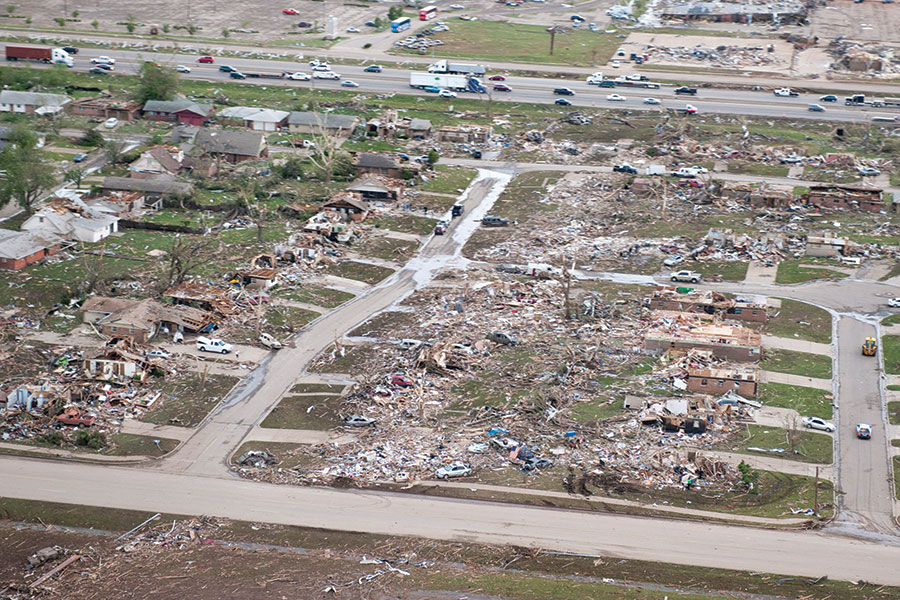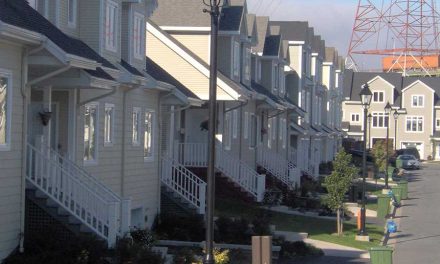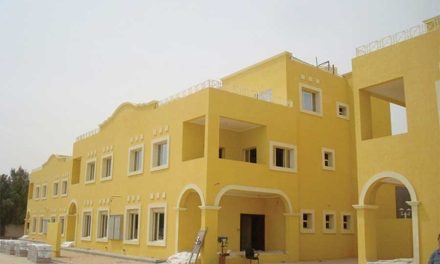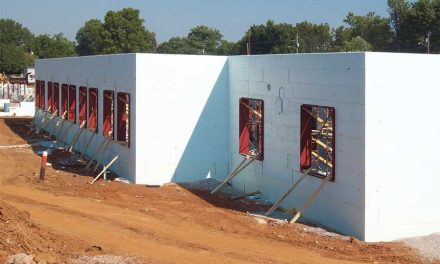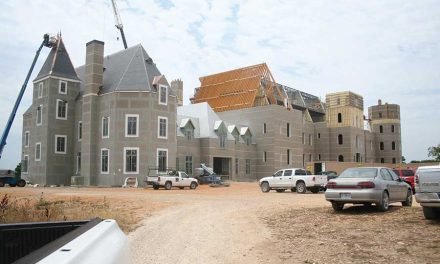We live in a world today that demonstrates that disaster and calamity are no longer events that are few and far between.
The recent earthquakes in southern California; the rapid rise of Hurricane Barry, and tornadoes across the Midwest and plains are just a few examples of what the future might hold.
If more frequent weather-related disasters are a new normal then we need to embrace new technology, better building materials, and a renewed focus on the future. While it’s good to talk of energy-efficiency, disaster resilience, speed of construction, better quality air, cost of materials, or one or another of the many benefits ICFs deliver, it’s time we all step back and look at the composite benefits of ICFs and share them when we educate others.
Tornado and High Winds
All ICFs of a certain core thickness with proper reinforcement demonstrate wind speed resistance to tornadoes, hurricanes, and also the impacts from debris carried by the winds. The strong ICF walls ensure the building envelope stays intact keeping the structure sound. Testing at Texas Tech University in Lubbock, Texas as well as demonstrations in Florida, and blast testing by the U.S. military repeatedly demonstrate not only the strength of the structural concrete wall, but also the energy-dampening effect of the EPS foam itself. Add to that the noise dampening effect (STC ratings 50+) and ICF homes become safe and sources of calm during inclement weather events.
Wildfire
The level of uniform destruction caused by wildfires is devastating. Not only to homes and businesses, but to entire communities. The recent Camp Fire in northern California destroyed more than 18,000 structures and caused the loss of nearly 100 lives. This fire alone caused $16.5 billion in damage. The first rebuilt homes are just now receiving occupancy permits.
Would this have been a different story with more ICF construction? Yes. There would still have been damage, considering how intense and long-lasting as this fire was, but it’s impact would have been much less. ICFs provide a 4-hour fire rating with appropriate finishes inside and out. Exterior finishes with retardant properties can further protect other areas such as soffits and roofs. Even with an intense and fast-moving fire, many of these structures would have been remodeled and not utterly destroyed. A remodel remains potentially habitable during this process and the time needed to make it habitable again is much less, further reducing stress on local shelters and other community resources.
Earthquake
The seismic performance of ICFs demonstrates that with proper reinforcement and installation—along with the increased strength from the moist-cure of the concrete—creates an overall more resilient structure. The slow wet curing of the concrete inside the ICF forms maintain the chemical reaction in concrete longer, yielding higher strengths than the original design mix. The wall design and ease of placing reinforcement in ICF walls creates a faster and cost-effective method of building that yields superior results. Coupled with the other composite benefits such as insulation value and energy-efficiency these structures perform at levels not seen by other technologies, materials, or price point.
Floods
Having a home with solid concrete walls does reduce the inundation potential from flood waters. Mike Russell, an ICF distributor in Florida, saw his personal home take a direct hit from Hurricane Matthew. His home withstood sustained 140 mph winds with gusts of 160 mph and a 100-year, once-in-a-lifetime storm surge. He had no damage to the home except debris cleanup.
The use of an elevated foundation, high-impact windows and doors, hip roofs, non-vented soffits, and hurricane strapping all contributed to his home withstanding the storm surge, impacts from debris, and high winds.
Even if the home becomes inundated, the remediation process is much simpler. For the exterior walls there is little to no risk of mold, mildew or other hazards since the EPS foam and concrete are not food sources for these organisms.
Extreme Temperature
Though not yet considered a disaster, drastic and persistent swings in temperature cause a variety of challenges to people everywhere, and maintaining consistent interior temperatures becomes very costly. The use of ICFs in residential, multifamily, and commercial buildings significantly reduces the ongoing operational costs of these structures.
The minor investment in upfront construction costs can be the difference between residents that are able to afford to live in a multi-family unit during hot summers and cold winters. It can be the difference between sheltering in place during a disaster or returning after a disaster and finding their home repairable and livable.
The goal of our industry is to build energy-efficient, healthy, disaster resistant, and long-lasting structures. This is our opportunity to unite and share the honest truth about ICFs: they save lives and save money. Let’s work together and eliminate poor building practices and materials. Don’t just talk in anecdotes; tell the true stories about the projects you’ve been a part of and the lives that have been saved.
Help others understand and choose a future where their homes protect them from the worst and bring out the best in everyday living.
Brian Corder is marketing chair for the ICFMA and president of BuildBlock Building Systems.

